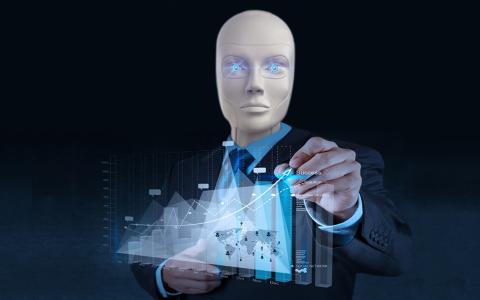
(Yahoo! Finance) - With AI talks raging along the promenade in Davos for the World Economic Forum, Dr. Doom is sounding the alarm bells on humanoid robots.
"The big breakthrough right now is the evolution of humanoid robots that essentially follow individual workers on the factory floor, on a construction site, even a chef in a restaurant or a housekeeper. It's terrifying, but it's happening in the next literally year or two," said Nouriel Roubini said on Yahoo Finance's Opening Bid podcast (video above; listen below).
Roubini — known as Dr. Doom for his bleak economic forecasts — said human jobs will be lost to humanoids.
"Instead, a LLM (large language mode) learns about everything in the world, the entire internet follows your job or my job or anybody else's job in a few months, then learns everything that a construction worker, factory worker, any other service worker can do, and then can replace them. And I think that it's going to be a revolution — it's going to affect blue-collar jobs like we've never, ever seen before."
The humanoid robot market could reach $7 trillion by 2050, Citi research recently found. Those robots — such as Tesla's (TSLA) Optimus — may be able to do everything from clean your home to fold your laundry. The robots could create job loss as routine tasks get automated.
Roubini is also concerned about the potential impact of tariffs on the US economy.
During his campaign, President Trump pitched several ways he could increase tariffs. Those included a 10% to 20% tariff on all foreign imports, a 60% to 100% additional tariff on China, and a 25% tariff on Mexico and Canada.
Trump has yet to announce details three days into his second term, but they hang over markets like a dark cloud.
Roubini said tariffs could lead to renewed inflation in the US and perhaps a rate hike from the Fed.
The Street has raced to price in potential economic impacts.
Goldman Sachs estimates that the Fed's Personal Consumption Expenditures index (PCE) would rise to 3% by late 2025 if a 10% across-the-board tariff kicks in. PCE had been slowing down in 2024 to around a 2.5% growth rate.
"This means that there will likely be a period of uncertainty that may tighten financial conditions and weigh on growth. In our base case, the uncertainty resolves and financial conditions ease anew. In our tariff risk case, the uncertainty continues to build and financial conditions tighten further," said Goldman Sachs chief economist Jan Hatzius.
The IMF predicted in a recent report that US gross domestic product (GDP) could fall by 0.4% in 2025 and by 0.6% in 2026 if a "sizable swath" of global trade is hit with tariffs by mid-2025.
Markets are beginning to fret about tariffs fueling inflation and pushing off rate cuts by the Federal Reserve.
The markets plunged in early January after December's job report blew past expectations, with 256,000 jobs added, compared to estimates of 155,000. The S&P 500 (^GSPC) dropped 1.5%, and the Dow Jones Industrial Average (^DJI) and Nasdaq Composite (^IXIC) each lost 1.6%. The 10-year Treasury yield (^TNX) continued a recent uptick as investors prepared for a higher-for-longer rate environment.
"If the bond vigilantes wake up because your policies are inflationary, then bonds just go higher, the stock market corrects, and you get punished," Roubini added.
By Brian Sozzi - Executive Editor



